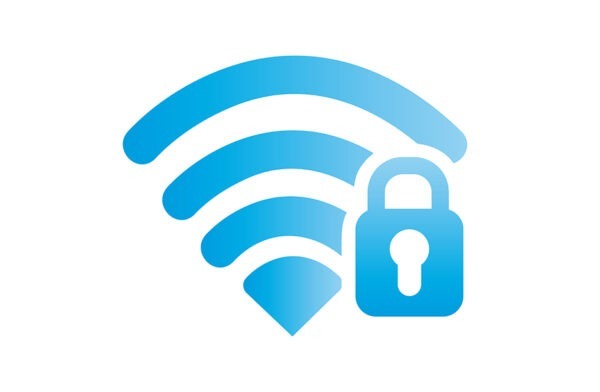In today’s digital age, wireless connectivity is the backbone of business operations and personal communications. A well-designed, reliable WiFi network ensures seamless, extensive connectivity, high-speed access, and a robust platform for digital activities. This guide considers essential WiFi design best practices for wireless networks. It aims to equip IT professionals and network administrators with the knowledge to create efficient, secure, and scalable WiFi networks.

The Importance of Robust WiFi Design
Robust wireless network design is crucial for several reasons: it supports the growing number of IoT devices, meets increasing bandwidth demands, and secures wireless network access against cyber threats. By prioritizing a comprehensive design strategy, businesses can avoid pitfalls like poor coverage, slow speeds, and vulnerable security points.
Key Considerations Before You Start
Before embarking on a WiFi network design project, it’s essential to consider the requirements of your WiFi services, including:
- The specific needs of your business or environment (e.g., size, layout, user density)
- The types of WiFi-enabled devices connecting to the network
- Security protocols to protect data and user privacy
- Future scalability to accommodate growth and technological advancements
Understanding Your WiFi Design Requirements
Designing an effective, successful WiFi network begins with thoroughly understanding business and technical requirements. This section explores how to gather and analyze the necessary information to inform your WiFi design decisions.
Analyzing Business Needs
Every organization has unique needs that its WiFi network must support. Start by identifying the primary functions of your wireless network—whether it’s supporting day-to-day operations, facilitating guest and client device access, or powering critical IoT devices. Consider factors like expected user density, type of usage (e.g., high-density deployments, voice-over IP), and special events that may require additional wireless network capacity.
Technical Requirements for Different Environments
The physical environment plays a significant role in wireless network design. Consider the layout, building materials, and any disruptive WiFi signals for indoor settings. Outdoor environments require attention to weather conditions, distance between buildings, and line-of-sight issues. Additionally, it is necessary to factor in the need for seamless roaming, high-density areas, and the WiFi network’s ability to support legacy devices.
By carefully assessing technical and business requirements, you can create a high-performance WiFi network design that meets current needs and is scalable for future demands.

Best Practices for WiFi Design
Creating a high-performing wireless network involves WiFi design best practices that ensure coverage, speed, and reliability. This segment highlights the foundational principles to guide your WiFi design process.
Planning for Coverage and Capacity
Adequate coverage ensures that WiFi signals reach all intended areas without dead zones, while capacity planning guarantees the network can handle the volume of traffic from users and devices. Start by mapping the physical space, noting potential barriers and high-traffic zones. Use predictive site surveys and WiFi design software to model coverage and identify the optimal placement of access points.
Selecting the Right WiFi Equipment
It is critical to avoid unnecessary network infrastructure and choose the proper hardware. Consider access points that support the latest WiFi standards (such as WiFi 6), offer sufficient range, and have the capabilities to manage the expected device load. Additionally, selecting equipment from vendors that support advanced features like beamforming and MU-MIMO can enhance the wireless network performance. Ensuring that your WiFi devices support the latest security protocols (WPA3) is also essential.
The Role of Site Surveys in WiFi Design
Conducting a physical site survey is essential to understand the challenges of the network’s environment. This involves testing wireless infrastructure placement and WiFi signal strength, identifying co-channel interference sources, and determining the best locations for access points. Post-deployment site surveys are also crucial to validate the design and make necessary adjustments.
Advanced WiFi Design Strategies
Employing advanced WiFi design tools can significantly enhance wireless network capacity and performance, especially in challenging environments and high-density settings.
Managing Co-Channel and Adjacent Channel Interference
Interference is a common challenge that can degrade WiFi performance. To mitigate this, carefully plan channel assignments to minimize co-channel interference, especially in areas with multiple access points and WiFi networks. Use non-overlapping channels in the 2.4 GHz band and leverage the broader bandwidths available in the 5 GHz band for adjacent channel deployments.
Ensuring Reliable Connectivity for High-Density Areas
High-density environments like conference centers or stadiums require capacity planning to ascertain accurate WiFi requirements to deliver reliable connectivity. This may involve deploying additional access points, utilizing high-density features of WiFi equipment, and optimizing client load balancing to distribute users evenly across the network. Techniques like band steering and airtime fairness can also improve user experience by managing the distribution of resources among devices.

Security Considerations in WiFi Design
WiFi network security is paramount to protect data and maintain user privacy. This section outlines essential best practices for securing wireless networks.
Best Practices for Secure WiFi Networks
Implementing strong encryption (WPA3 is currently the strongest), regularly updating firmware, and using complex passwords are foundational steps. A WiFi network access control (NAC) system can also help manage how many devices have access, ensuring only authorized users and devices can connect.
Implementing Advanced Security Measures
Beyond basic steps, consider advanced security measures such as VPNs for remote access, intrusion detection and prevention systems (IDPS), and segmented networks (using VLANs) to protect sensitive data. Regular security audits and penetration testing can also identify vulnerabilities before they can be exploited.
Incorporating these security considerations into your WiFi design safeguards your WiFi network and builds trust with users by protecting their data.
Common WiFi Design Mistakes to Avoid
Avoiding common pitfalls in WiFi network design is crucial for achieving optimal performance and user satisfaction. Critical mistakes that can be attributed to bad WiFi design include:
- Underestimating Capacity Needs: Failing to predict and plan for current and future network load accurately can lead to congestion and poor performance.
- Neglecting Physical Environment Factors: Ignoring walls, floors, and other obstacles can result in inadequate coverage and signal strength issues.
- Overlooking Security Protocols: Insufficient security measures can expose the WiFi network to vulnerabilities and cyber threats.
- Ignoring User Experience: Designing WiFi without considering the end user’s needs can lead to wireless networks that are difficult to use and do not meet performance expectations.
By being mindful of these common errors and actively working to prevent them, you can ensure a more effective WiFi design.
Next Steps for Your WiFi Design Project
With these WiFi design best practices in hand, your next steps involve putting this knowledge into practice. Begin by working with EIRE Systems for a detailed assessment of your current WiFi network and requirements. Engage with stakeholders to thoroughly understand user and business needs. Consider conducting a professional site survey to accurately map your environment and correlated with business requirements. Then, select the appropriate tools and technologies that align with your wireless network design goals. Remember, ongoing evaluation and adaptation are vital to maintaining a high-performing WiFi network as your business needs evolve.
About the Author: EIRE Systems
EIRE Systems is a leading independent provider of professional IT, AV and Access Security services to the financial, insurance, manufacturing, health care, retail, construction, hospitality, commercial real estate, legal, educational and multinational sectors in Japan and throughout the Asia Pacific region. EIRE Systems has expertise across a wide spectrum of Information Technologies, with a track record for successfully completing hundreds of assignments since its establishment in 1996.

